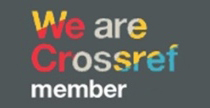PENGOLAHAN LIMBAH KACA MENJADI PRODUK SENI KALIGRAFI GAMPONG JALIN KOTA JANTHO
DOI:
https://doi.org/10.51804/deskovi.v2i2.516Keywords:
limbah kaca, karya seni, kaligrafi, jalinAbstract
Limbah sering dikenal dengan sampah yang merupakan suatu bahan buangan hasil proses produksi industry dan rumah tangga dimana kehadirannya tidak diinginkan. Salah satu limbah yang adalah limbah kaca. Limbah kaca banyak terdapat ditemukan di tempat-tempat industri kaca seperti akuarium, pabrik botol minuman, pengolahan lemari kaca dan lain sebagainya. Desa jalin adalah salah satu kawasan di kota jantho aceh besar yang memiliki potensi kunjungan wisata alam yang ramah bagi seluruh kalangan. Oleh karena itu alangkah baiknya Kawasan ini dapat sekaligus dijadikan sebagai tempat pengolahan benda seni sebagai penambah daya tarik, salah satunya pengolahan limbah kaca. limbah kaca tersebut diolah dan dimanfaatkan agar menjadi suatu barang yang bernilai ekonomis. Salah satu cara mengolah limbah kaca menjadi produk seni kaligrafi yang bernilai ekonomis bagi masyarakat di kota jalin Jantho, Aceh Besar. Langkah dalam melakukan pengabdian masyarakat ini terdiri dari dua tahap, tahap pertama identifikasi masalah dan tahap kedua penyusunan program. Dalam penyusunan program terdiri dari beberapa tahapan antara lain : Persiapan kepada masyarakat, Pengenalan souvenir-souvenir yang menghasilkan produk yang kita inginkan dan cara pembuatannya, Mengajarkan kepada masyarakat cara mengolah bahan dan membuat produk di kampung Jalin.
Cesspit is often known as rubbish which is a cesspit material produced by industrial and home industry production processes where its presence is undesirable. One cesspit that is glass cesspit. Glass cesspit is found in many places in the glass industry such as aquariums, beverage bottle factories, glass cabinet processing and so on. The jalin vilage is one of the regions in the Aceh Besar jantho city that has the potential for friendly natural tourist visits for all walks of life. Therefore it would be nice this area can also be used as a place of processing of art objects as an addition to attraction, one of which is the treatment of glass cesspit. The glass cesspit is processed and utilized to become an economically valuable item. One way to process glass cesspit into calligraphy art products that are of economic value to people in the intertwined city of Jantho, Aceh Besar. This step in conducting community service consists of two stages, the first stage is the identification of problems and the second stage is the preparation of the program. In the preparation of the program consists of several stages, among others: Preparation to the community, introduction of souvenirs that produce the products we want and how to make them, teach the community how to process ingredients and make products in the village of Jalin
Downloads
References
Djelantik, A.A.M. (1999) : Estetika Sebuah Pengantar. Masyarakat Seni Pertunjukan Indonesia
George Kenneth M. 2012, MELUKIS ISLAM : Amal dan Etika Seni Islam Di Indonesia, Mizan.
Joshua Justin, 2015, Eksplorasi Limbah Kaca, e-Prosiding of Art & Design, Vol. 2, No. 2
Mukhlas Khasani, 2013, Pemanfaatan Bubur Kertas Untuk Pembuatan KAligrafi Sebagai Upaya Pembinaan Kreativitas SAntri TPA AL- Luqmaniyyah di Kelurahan Pandeyan Kecamatan Umbulharjo Yogyakarta, Skripsi.
Shidiq Abdurrahman, dkk, 2015, Pemanfaatan Limah KAca Sebagai Bahan Baku Pengembangan Produk. Jurnal Tingkat Sarjana Senirupa & Design, Vol. 1, No. 1
Tabrani, Primadi, Prof. Dr. 2000, Proses Kreasi, Apresiasi, Belajar, Penerbit ITB, Bandung.
Downloads
Published
How to Cite
Issue
Section
License
With the receipt of the article by DADJ Editorial Board and the decision to be published, the copyright regarding the article will be transferred to DADJ. The copyright transfer form can be downloaded here.
DADJ has the right to multiply and distribute the article and every author is not allowed to publish the same article that was published in this journal.

DESKOVI: Art and Design Journal is licensed under a Creative Commons Attribution 4.0 International License.
Under the following terms:
Attribution — You must give appropriate credit, provide a link to the license, and indicate if changes were made. You may do so in any reasonable manner, but not in any way that suggests the licensor endorses you or your use.






